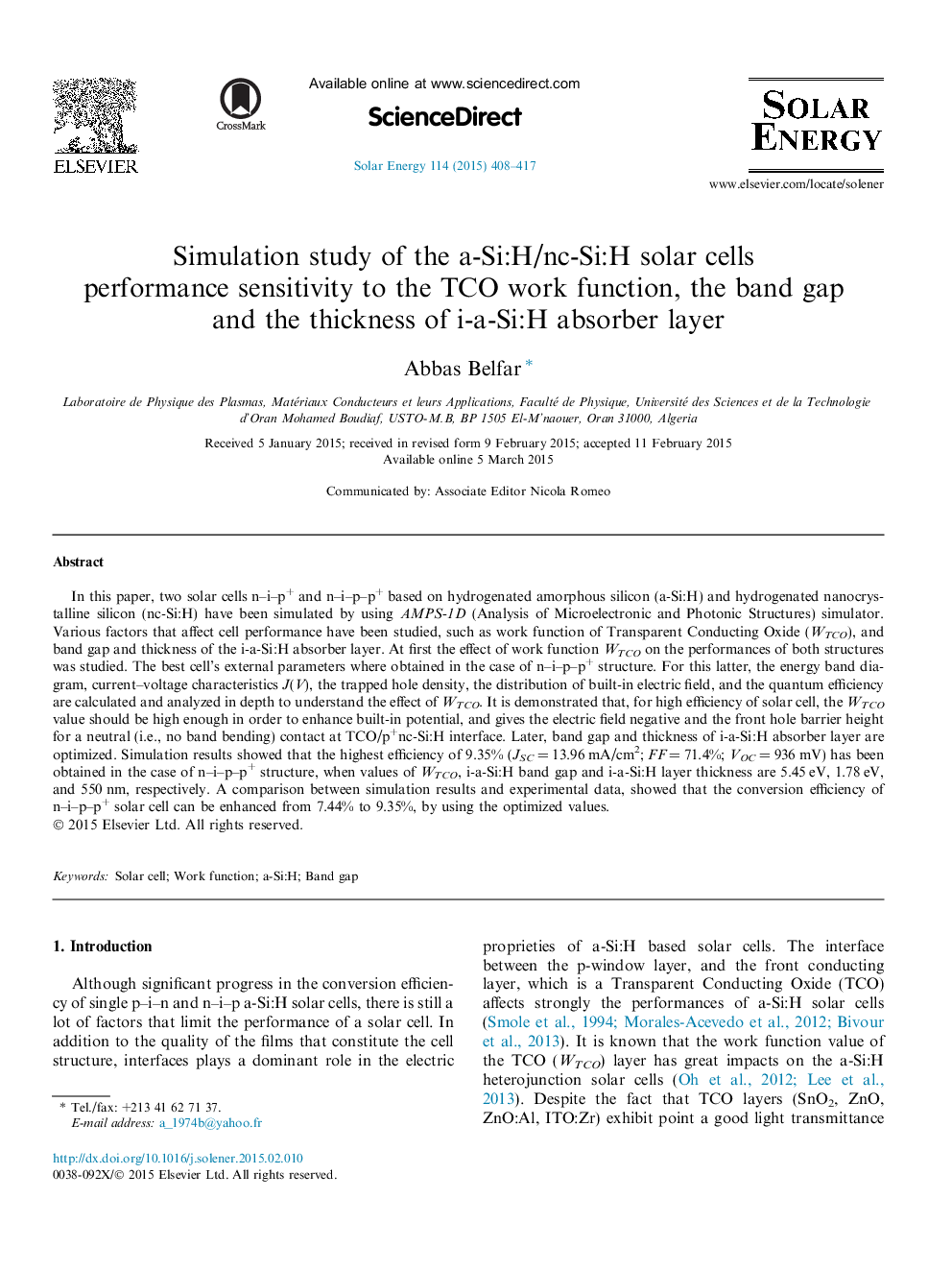| کد مقاله | کد نشریه | سال انتشار | مقاله انگلیسی | نسخه تمام متن |
|---|---|---|---|---|
| 7938066 | 1513104 | 2015 | 10 صفحه PDF | دانلود رایگان |
عنوان انگلیسی مقاله ISI
Simulation study of the a-Si:H/nc-Si:H solar cells performance sensitivity to the TCO work function, the band gap and the thickness of i-a-Si:H absorber layer
دانلود مقاله + سفارش ترجمه
دانلود مقاله ISI انگلیسی
رایگان برای ایرانیان
کلمات کلیدی
موضوعات مرتبط
مهندسی و علوم پایه
مهندسی انرژی
انرژی های تجدید پذیر، توسعه پایدار و محیط زیست
پیش نمایش صفحه اول مقاله

چکیده انگلیسی
In this paper, two solar cells n-i-p+ and n-i-p-p+ based on hydrogenated amorphous silicon (a-Si:H) and hydrogenated nanocrystalline silicon (nc-Si:H) have been simulated by using AMPS-1D (Analysis of Microelectronic and Photonic Structures) simulator. Various factors that affect cell performance have been studied, such as work function of Transparent Conducting Oxide (WTCO), and band gap and thickness of the i-a-Si:H absorber layer. At first the effect of work function WTCO on the performances of both structures was studied. The best cell's external parameters where obtained in the case of n-i-p-p+ structure. For this latter, the energy band diagram, current-voltage characteristics J(V), the trapped hole density, the distribution of built-in electric field, and the quantum efficiency are calculated and analyzed in depth to understand the effect of WTCO. It is demonstrated that, for high efficiency of solar cell, the WTCO value should be high enough in order to enhance built-in potential, and gives the electric field negative and the front hole barrier height for a neutral (i.e., no band bending) contact at TCO/p+nc-Si:H interface. Later, band gap and thickness of i-a-Si:H absorber layer are optimized. Simulation results showed that the highest efficiency of 9.35% (JSCÂ =Â 13.96Â mA/cm2; FFÂ =Â 71.4%; VOCÂ =Â 936Â mV) has been obtained in the case of n-i-p-p+ structure, when values of WTCO, i-a-Si:H band gap and i-a-Si:H layer thickness are 5.45Â eV, 1.78Â eV, and 550Â nm, respectively. A comparison between simulation results and experimental data, showed that the conversion efficiency of n-i-p-p+ solar cell can be enhanced from 7.44% to 9.35%, by using the optimized values.
ناشر
Database: Elsevier - ScienceDirect (ساینس دایرکت)
Journal: Solar Energy - Volume 114, April 2015, Pages 408-417
Journal: Solar Energy - Volume 114, April 2015, Pages 408-417
نویسندگان
Abbas Belfar,